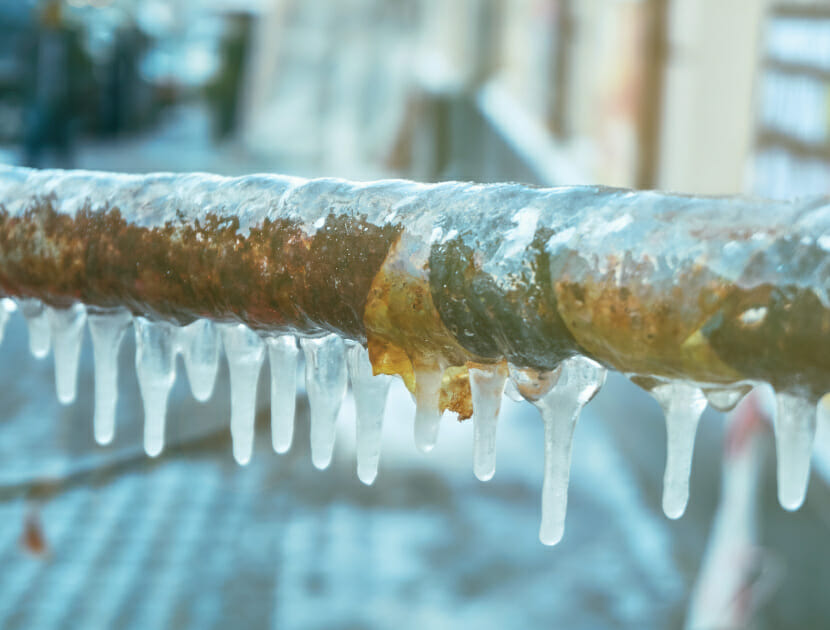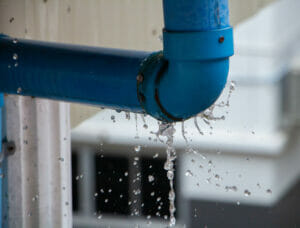Winter sees a seasonal increase in escapes of water in both domestic and commercial properties due to the freezing of water pipes. The UK Water Regulations state that “All cold water fittings located within the building, but outside the thermal envelope, or those outside the building must be protected against damage by freezing”.
Property damage from escapes of water caused by frozen pipes is typically associated with pipework that is routed through areas of a property within a building’s perimeter, but outside the ‘thermal envelope’ of a building (for example: lofts and out-buildings).The thermal envelope of a building consists of components that are designed to separate the warm air inside a building from the cold air outside; the thermal envelope is defined as: the area within a building that is insulated against heat loss. On that basis, a pipe that is outside the thermal envelope can be exposed to sub-zero temperatures during a period of cold weather. Pipework within the thermal envelope of the building can also freeze, leading to escapes of water when the building is not heated.
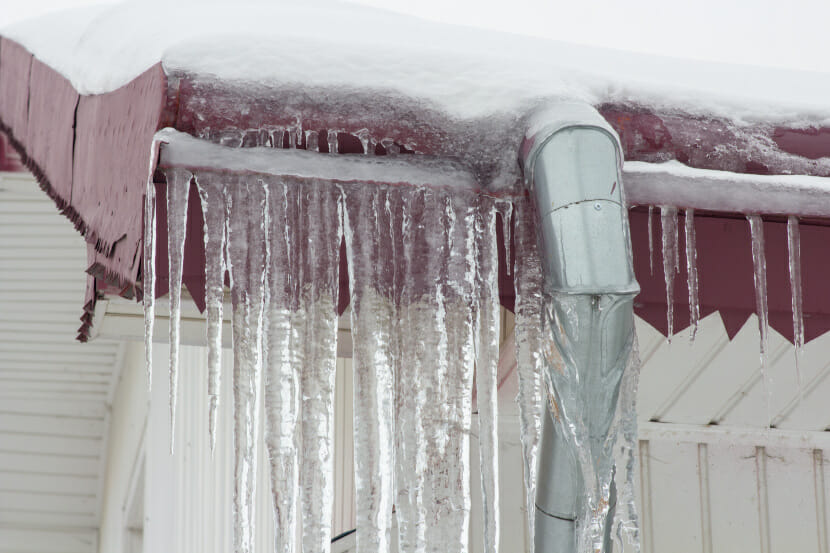
HOW DOES INSULATION WORK?
The common belief that water pipe insulation is provided in order to ‘keep the cold out’ and prevent the freezing of water pipes is, on a technical basis, incorrect. Insulation is actually provided to retain the ‘heat energy’ within the water pipe.
Thermal insulation, applied directly around a pipe in the form of lagging, slows down the impact of cooling of water during sub-zero conditions (by helping to retain the heat energy within the water pipe) but will not prevent heat transfer from the water in situations where the ambient temperature is lower than both the pipe and its contents. Thermal insulation does not give complete protection if the temperature falls either to or below freezing point. However, a suitable thickness of thermal insulation does delay the onset of freezing in cold weather. If more heat is supplied from the liquid passing through the system than is lost through the insulation, freezing can be avoided. However, if the outside temperature remains low enough, for long enough, and the movement of liquid through the pipe (or vessel) is slow, then insulation, however thick, will not prevent eventual internal freezing.
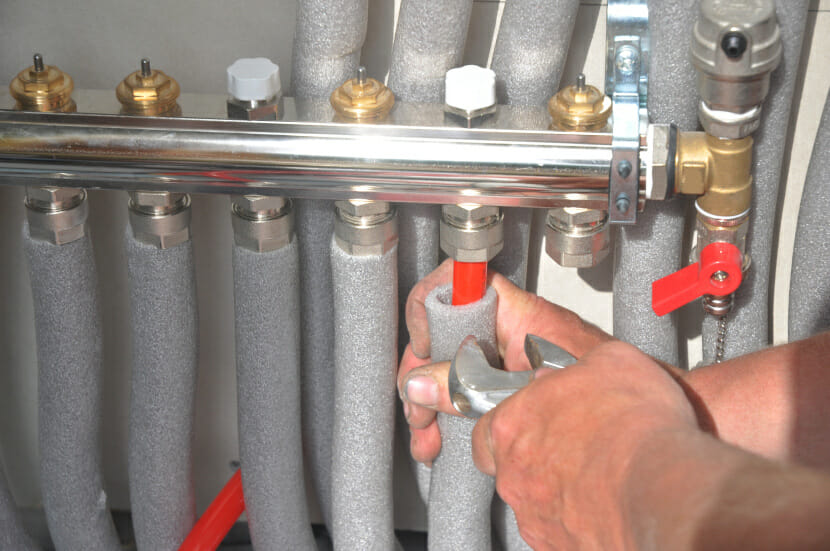
Some areas of the United Kingdom can, at times, see prolonged low temperatures through both the day and night. Unless the water supply is isolated, and the pipework drained before the onset of freezing, additional measures may be required to ensure that the freezing of pipes and fittings does not occur.
As insulation or pipe lagging can only provide a time-limited amount of protection against pipework freezing, an alternative option is to add ‘trace heating’ to the sections of pipework at greatest risk. Trace heating is a system where a heating element, in conjunction with a thermostat (a frost-stat), is applied to pipework. When the frost thermostat detects freezing temperatures, the trace heating system is activated, and the pipework is warmed sufficiently to avoid freezing. Alternatively, the installation of thermostatically controlled shut-off and draining valves for isolating and draining sections of pipework can be effective.
TYPICAL SEQUENCE OF EVENTS
The typical sequence of events, leading to an escape of water due to freezing pipework is as follows:
- When water undergoes a phase transition from liquid to solid (freezing), the density decreases (i.e., the orientation of molecules in ice results in a structure that occupies more volume than the liquid water did in its liquid state).
- This increase in volume is in the region of 9%.
- The net expansion in volume causes the pipe to fail, or can cause fittings to be moved.
- The formation of the ice can also increase the pressure of water in any small, closed volume beyond the plug of ice.
- The movement of fittings (such as closed valves) can occur as a result of this increased water pressure, as well as from direct action from the ice itself.
- The ice that has formed inside the pipework forms a plug.
- Once the temperature increases, the plug melts and water is then able to escape.
The physical evidence of an escape of water due to the sequence detailed above is often gone by the time Hawkins are instructed (in that the ice has melted). Nevertheless, the nature and appearance of pipework that has failed can be used to determine the cause of the escape of water. The appearance of a copper or plastic pipe that has failed due to freezing typically exhibits a ‘fish-mouth’ split. Rigid plastic pipe, such as chlorinated polyvinyl chloride (CPVC) is brittle and will therefore typically completely fracture. If plastic fittings are used, the expansion of the pipe’s liquid contents as it freezes can cause the fittings to be pushed from the end of a pipe.
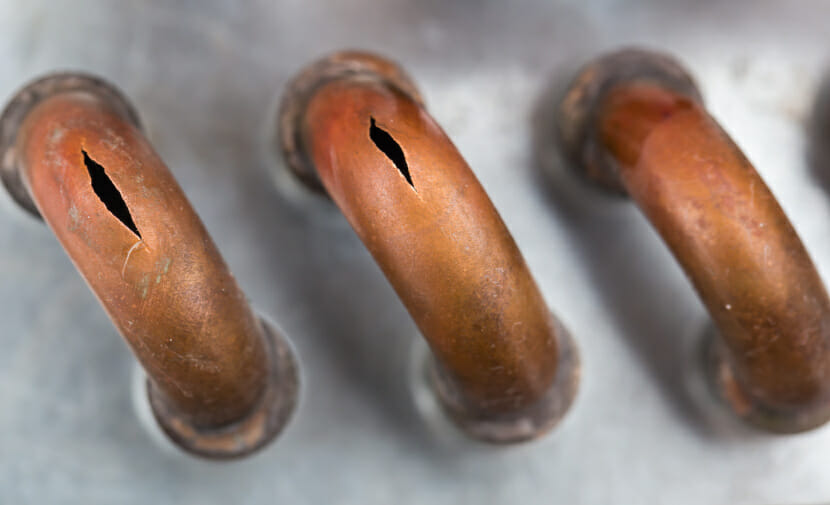
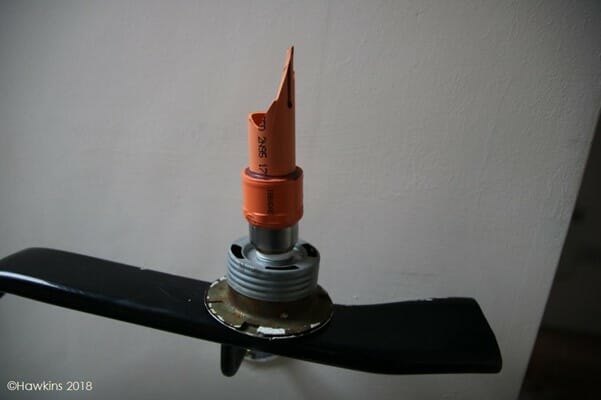
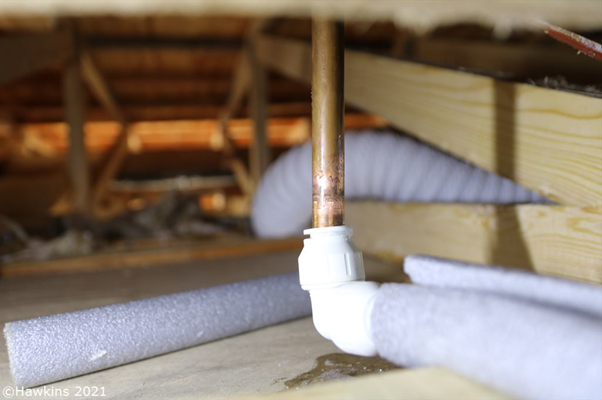
Determining whether freezing temperatures have contributed to an escape of water requires the use of historical weather data. For example, if the temperature has not risen above zero for a number of days, then it is possible that freezing temperatures have contributed. This can also provide some timing data to compare to when the leak was first detected.
In addition, if a property has been left unoccupied and there is a requirement prescribed by Insurers for the heating to be left on, the interrogation of a central heating timer or modern thermostat can be useful, as well as reviewing recent energy meter readings and bills.
DON’T LAG BEHIND…
When investigating the causes of escapes of water, Hawkins can collect and review information, such as photographs, building specifications and weather data, as well as visit the location of an escape of water to take a clear and thorough record of both the witness evidence and the physical evidence left behind. The quality of information collected at an early stage can be crucial to confirm the important facts surrounding an escape of water due to freezing pipework.
ABOUT THE AUTHOR
Stephen Brough has almost 12 years’ experience in materials engineering and failure analysis. He has a BEng in Materials Engineering, as well as a City and Guilds in Plumbing. Since joining Hawkins in 2017, he has led over 400 investigations into domestic, industrial and commercial incidents, which have ranged from small losses, through to multimillion pound claims, as well as personal injuries.
